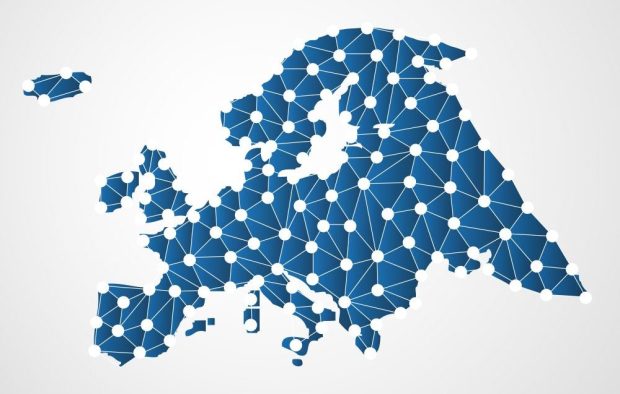TIE Kinetix Tackles Move To Paperless Business, Government

The push to go paperless is fast gaining traction on the international stage. This should be no surprise considering how much else has shifted into the digital realm in recent years.
Both businesses and governments have adopted electronic invoicing methods in response to new regulations and in light of the significant cost reduction it affords. But even as a wave of e-invoicing looks to sweep across Europe and to a lesser extent the U.S., a few notable complications remain.
Combined, businesses and governments in Europe and the U.S. process nearly 25 billion invoices each year,said Jan Sundelin, CEO of digital supply chain solutions provider TIE Kinetix. In shifting to electronic invoicing for B2B and B2G, both Europe and the U.S. could save €240 billion by 2022.
The savings come from a significant reduction in the cost of labor, printing and post, as well as lowering costs associated with human errors.
“The average price per [paper] invoice is about $15,” said Sundelin. “If you print it and add labor costs, now you’re talking between $30 and $40. Sending via mail it can make it hit $50.”
In Europe, at least, compliance with the move is mandatory. The European Commission has mandated that member states must accept electronic invoices on a common semantic model, XML, by 2018. Some nations like Denmark and Finland, said Sundelin, have already been enforcing paperless invoicing for years.
Businesses are wont to follow these regulations as well, Sundelin said, especially since some governments, like Denmark’s, have stopped paying on paper invoices all together as of 2011.
“Every market in Europe is now standardizing on different formats so that they can receive electronic invoicing,” he said, noting that while federal, state and local governments in the U.S. have also started taking to e-invoicing, stateside progress will likely take significantly more time.
Sundelin pointed to estimates that indicated that by 2022, about 38 percent of government invoicing in the U.S. will be digital. At that time, Europe looks to be 98 percent digital. For B2B and B2G invoicing that spans national borders, especially in the direction of U.S. to Europe, enabling e-invoicing compliance will become increasingly key.
The process becomes more complicated when taking into account that there isn’t a single global system standard for e-invoicing and other digital document transfers.
Large retailers, businesses and manufacturers like Walmart and Ford, for instance, have long worked with different electronic data interchange (EDI) systems for their purchase orders, invoices and other notices between partners. XML is the format of choice for the European Commission — and there exist a number of others.
Sundelin equates these number of different file types to world languages and dialects — some are closely related and mutually intelligible, others require a translator.
TIE Kinetix acts as the translator in this analogy.
On this note, Sundelin shared his thoughts on the disparity between U.S. and European adoption of e-invoicing regulations. While part of the difference is a greater power of regulatory bodies to enforce technology standards, he also pointed to something more fundamental.
“The U.S. is usually first in IT innovation,” Sundelin said. “But this project deals with the problem of digital communication with different countries. In Europe, it’s almost like we’ve learned from our history of dealing with many local governments in many languages. We have always spent a lot of time to make sure that we can understand each other. So a project like this is perhaps more intuitive to set up.”
For their part in enabling communication, TIE Kinetix transfers some 3 billion documents between business partners and their different networks worldwide each year, said Sundelin, as part of its digital supply chain operations.
“We have about 40,000 connections,” he added, “and we reach up to 300,000 different companies through our interoperability.”
Recently, TIE Kinetix announced a partnership with ERP manufacturer Exact that works to boost B2B and B2G e-invoicing capabilities for its users.
“It’s a way to communicate on Exact software straight to a local government in the Netherlands, Belgium, Scandinavia,” said Sundelin, “where they have now this ability or requirement to receive electronic invoicing. It requires something different to talk with the Belgian government than if you want to talk to Walmart.”
What this partnership does is grow TIE Kinetix’s ability is enable businesses to continue to work with other businesses and government organizations while ensuring compliance with international and local standards on invoicing.
“What we are doing here, really,” Sundelin said, “is making sure that these electronic documents are getting to where they need to go and in the format they need to be in.”
